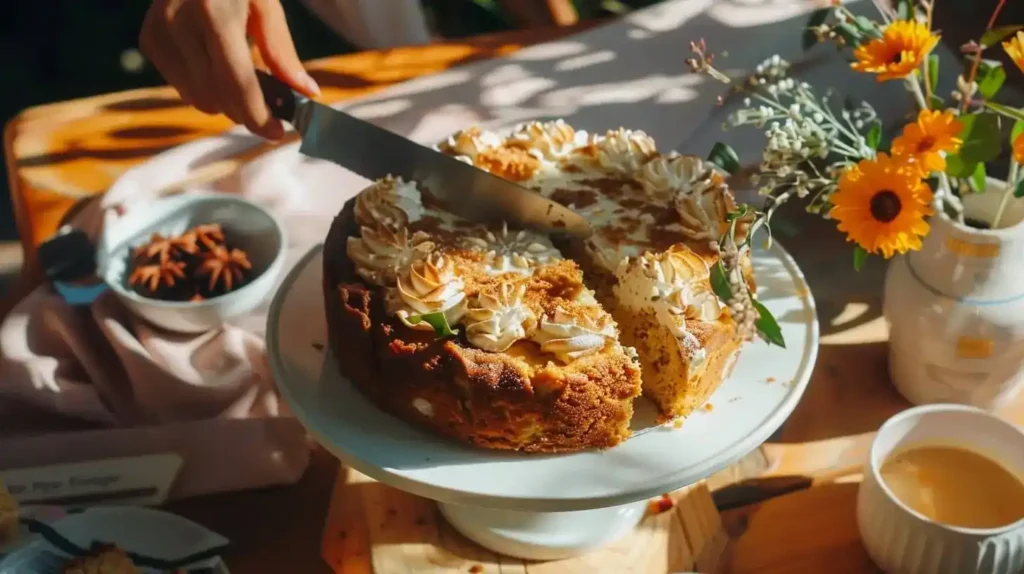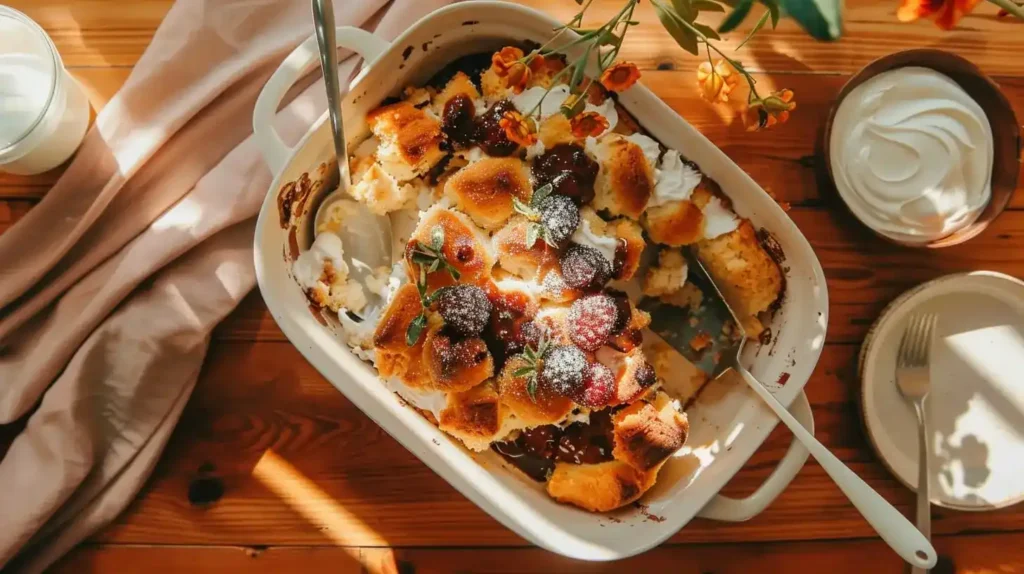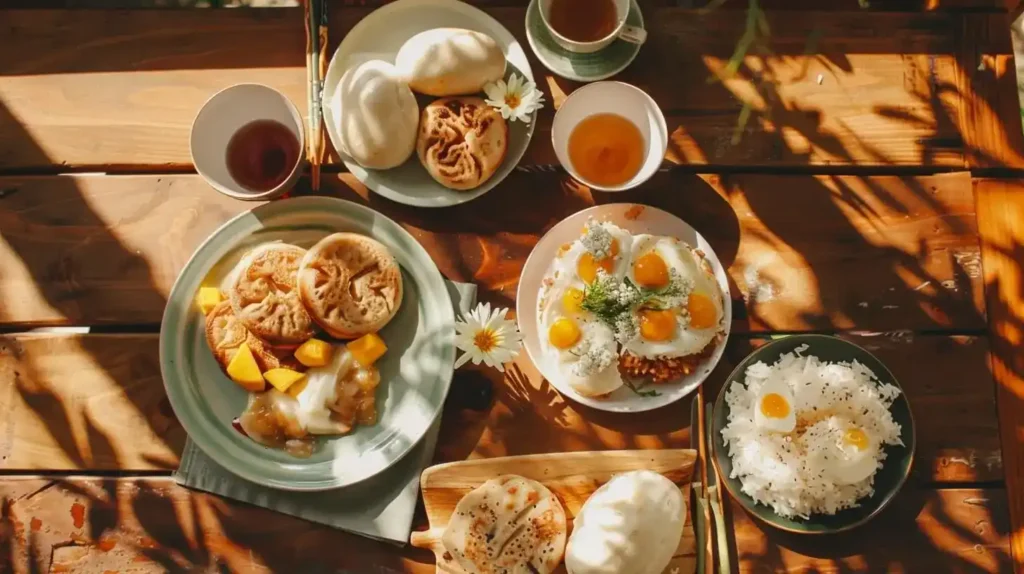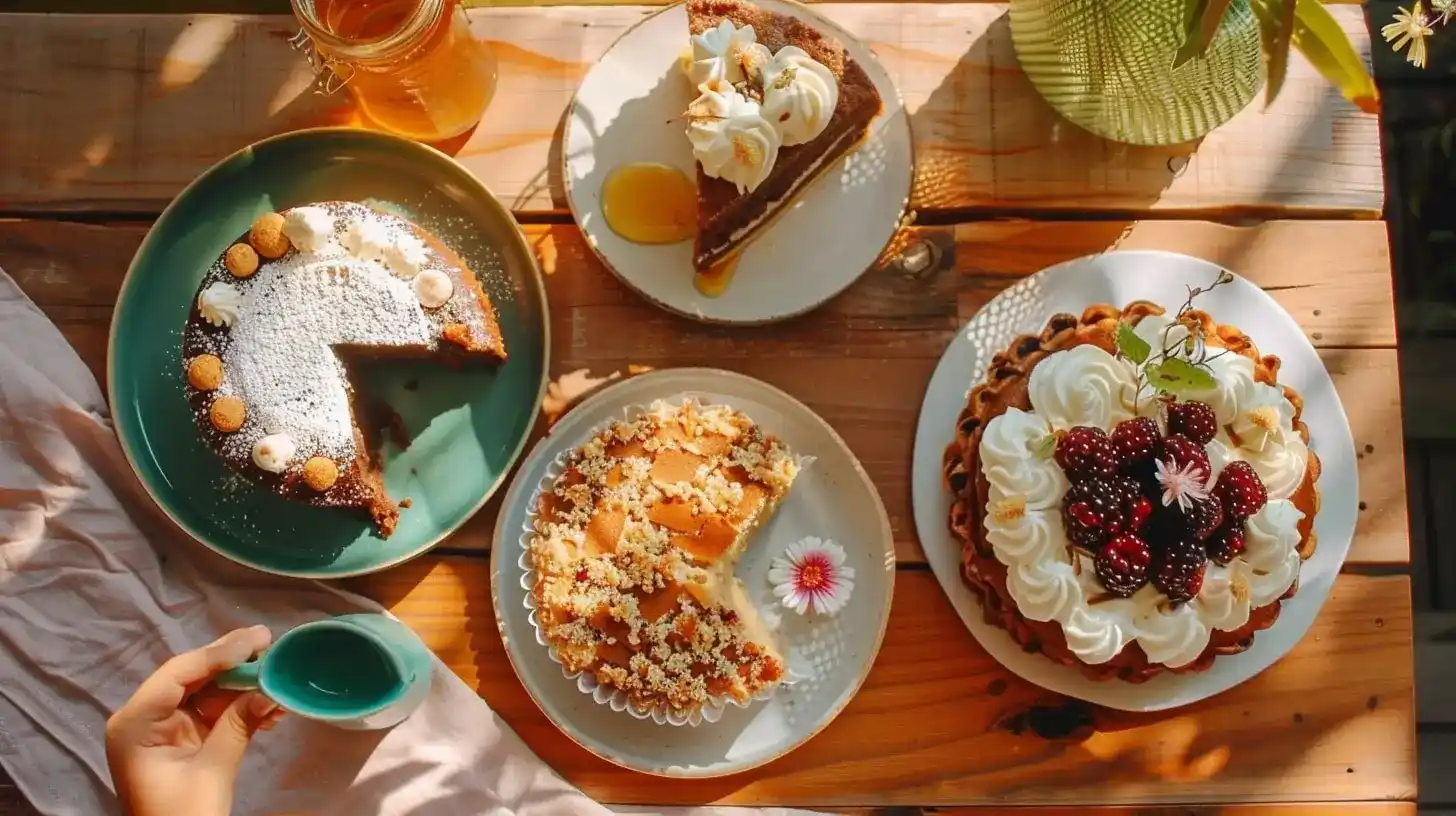The first time I served chocolate cake for breakfast, my children’s eyes widened with a mixture of disbelief and delight. “Is this really breakfast?” my son whispered, as if speaking too loudly might break the spell. That morning—my daughter’s birthday before school—taught me something important about sweet breakfast treats: sometimes the most nourishing thing we can serve our families isn’t measured in protein or fiber, but in joy and connection.
My mother wasn’t one for elaborate cooking, but on special occasions—the first day of school, birthdays, or when report cards brought good news—she’d surprise us with cinnamon rolls or chocolate chip pancakes. These weren’t everyday occurrences, which made them treasured moments that linger in my memory decades later. Those sweet breakfast treats weren’t just food; they were her way of turning ordinary days into celebrations.
Table of Contents
The Magic of Sweet Breakfast Treats in Family Traditions
In our home, sweet breakfast treats have become markers of special moments and seasons. The smell of pumpkin muffins signals fall’s arrival as surely as the changing leaves. Cranberry breakfast cake appears during the holiday season, carrying the festive spirit to our morning table. And birthday mornings always feature the honoree’s favorite sweet indulgence, regardless of traditional breakfast “rules.”
What makes sweet breakfast treats so powerful isn’t just their flavor—it’s their ability to transform an ordinary morning into something memorable. In the rush of family life, these intentional moments of celebration create touchstones that children carry with them long after they’ve forgotten what they got for their tenth birthday or what grade they received on that science project.
Sweet breakfast treats offer families a way to:
- Mark special occasions with meaningful traditions
- Break from routine in delightful, memorable ways
- Create sensory memories that bond family members together
- Practice moderation while still embracing joy in food
- Connect through the preparation process, not just the eating
These special morning indulgences remind us that nourishment comes in many forms, and feeding our sense of occasion and delight is as important as feeding our bodies.
Famous Chocolate Cake: A Special Breakfast Revolution

When my son asked me what is the world’s most famous chocolate cake, I realized my answer wasn’t about a specific recipe but about the way chocolate cake has become a cultural symbol of celebration. From birthday parties to weddings, chocolate cake represents special occasions across cultures and generations.
Bringing that celebratory spirit to the breakfast table might seem unconventional, but it creates powerful memories. Our breakfast-friendly version of chocolate cake includes ingredients that might surprise you—grated zucchini for moisture, whole wheat flour for fiber, and yogurt for protein and tenderness. While still a sweet breakfast treat rather than an everyday staple, these modifications make it a more balanced morning option for special days.
The morning my daughter earned her first swimming badge after months of fear around water, we celebrated with chocolate breakfast cake. The pride in her eyes as she helped measure ingredients the night before matched the confidence she’d found in the pool. These moments of recognition—marking effort, not just achievement—build children’s sense of being seen and valued.
Remember, sweet breakfast treats like chocolate cake are about context. When reserved for truly special occasions, they become powerful memory-makers rather than everyday indulgences. The contrast between our regular nourishing breakfasts and these special celebrations teaches children about balance and the role of food in both nutrition and connection.
Mary Jane Cake: Discovering Breakfast Magic in Vintage Recipes

My grandmother’s recipe box held treasures I only discovered after she passed—handwritten cards with mysterious names and sparse instructions that assumed the baker already knew the techniques. When I came across a card simply titled “Mary Jane Cake,” I was intrigued. What is a Mary Jane cake? The internet offered conflicting answers, but my grandmother’s version appeared to be a simple spice cake with molasses—perfect for breakfast adaptation.
Recreating this recipe became a journey connecting past to present. My children gathered around as I described my grandmother’s tiny kitchen where she’d baked for seven children despite having no electric mixer or fancy equipment. As we adapted her recipe—adding grated apple for moisture and reducing the sugar—we weren’t just making breakfast; we were extending family heritage into another generation.
The gentle spices and subtle sweetness of this vintage cake make it perfect for special breakfast occasions, particularly in autumn when the warming notes of cinnamon, nutmeg, and molasses feel especially appropriate. Served with yogurt and fresh fruit, it bridges tradition and modern nutritional awareness in one delicious package.
What makes vintage recipes like Mary Jane Cake so special for breakfast treats is their inherent moderation. Before sugar and refined ingredients became inexpensive and plentiful, sweet baked goods tended to be less overtly sweet than modern versions. This restraint makes them naturally better suited to breakfast adaptation.
Chocolate Dump Cake: Effortless Special Occasion Breakfast

Some mornings call for celebration, but time remains in short supply. Enter the breakfast-friendly chocolate dump cake—a sweet breakfast treat that delivers maximum joy with minimum effort. The name “dump cake” comes from the preparation method: ingredients are literally dumped into the pan with little mixing required.
When my youngest had his tonsils removed, his first day home from the hospital called for comfort and celebration of his bravery. Still in pajamas and moving slowly, he was able to help make our breakfast dump cake simply by pouring and sprinkling ingredients into the baking dish. This participation—possible even when energy was low—gave him a sense of accomplishment during recovery.
The common mistake to avoid when making dump cake is overmixing. The charm of this sweet breakfast treat lies in the distinct pockets of flavor that develop when ingredients meld during baking rather than during mixing. This approach not only simplifies preparation but creates an interesting texture that conventional cakes don’t offer.
While traditional dump cakes often use highly processed ingredients, our breakfast version incorporates more wholesome elements without sacrificing the effortless preparation:
- Unsweetened applesauce replaces some of the oil
- Yogurt adds protein and tenderness
- Fresh or frozen berries provide natural sweetness and antioxidants
- Chopped nuts add protein, healthy fats, and satisfying texture
The result is a sweet breakfast treat that feels indulgent while offering more nutritional value than most commercial breakfast pastries or doughnuts.
Asian-Inspired Breakfast Desserts: Sweet Morning Traditions from Across Cultures

My fascination with global breakfast traditions began during college when my roommate from Hong Kong introduced me to congee topped with sweet red bean paste. The concept of sweet breakfast treats from Asian cultures opened an entire world of morning possibilities beyond Western pancakes and waffles.
Exploring what are the most popular desserts in Asia reveals morning options that often incorporate ingredients we might not typically associate with breakfast in Western kitchens—mung beans, glutinous rice, coconut milk, and red bean paste. Many of these sweet breakfast treats offer interesting textural experiences alongside subtle sweetness rather than overwhelming sugar content.
When my children were studying world cultures in elementary school, our breakfast table became a laboratory for global exploration. We tried Chinese steamed buns with sweet red bean filling, Vietnamese sticky rice with coconut, and Korean hotteok (sweet pancakes with brown sugar, cinnamon, and nuts). These experiments taught my children about cultural diversity through the universal language of food.
What I appreciate most about common Chinese desserts and other Asian sweet breakfast treats is their moderation. Many traditional recipes use less sugar than Western counterparts and incorporate ingredients with natural sweetness. This approach aligns perfectly with creating special breakfast moments that don’t lead to mid-morning energy crashes.
Creating Your Own Sweet Breakfast Treat Traditions

Sweet breakfast treats become most meaningful when they connect to your family’s unique story and values. Here’s how to develop traditions that balance joy and nutrition:
- Link treats to genuine occasions – Rather than arbitrary “treat days,” connect special breakfasts to achievements, milestones, or seasonal celebrations that have real meaning.
- Involve children in preparation – When children participate in creating sweet breakfast treats, they develop both cooking skills and deeper connections to family traditions.
- Consider the timing – A special breakfast before a big test or important event provides emotional support and positive energy when needed most.
- Balance indulgence with nourishment – Serve sweet breakfast treats alongside protein and fruit to create a more complete meal that provides both joy and sustained energy.
- Tell the story – Share why you’re having this special breakfast and, when relevant, connect it to family history or cultural traditions.
In our home, sweet breakfast treats have become vessels for family storytelling. The cranberry cake on the first day of winter comes with the retelling of the ice storm the year my son was born. The coconut pancakes on national championship swimming days carry the narrative of my daughter overcoming her fear of water. These stories, shared over special food, become part of our family’s emotional heritage.
The most powerful sweet breakfast treat traditions aren’t about the food alone—they’re about the meaning we attach to them and the connections they foster around our morning tables. In the simple act of making an ordinary Tuesday special through a shared breakfast indulgence, we tell our loved ones: this day matters, this achievement counts, this moment deserves recognition.
What sweet breakfast traditions will you create in your family?
With warmth, Sophia
FAQ: Sweet Breakfast Treats
Q: How can I make sweet breakfast treats more nutritious?
A: Look for ways to incorporate fruit, nuts, whole grains, and protein-rich ingredients like yogurt or nut butters. Reduce sugar by 25-30% in most recipes (this usually goes unnoticed), and try using natural sweeteners like mashed banana or applesauce for part of the sugar.
Q: Can I prepare sweet breakfast treats ahead of time?
A: Absolutely! Most quick breads, muffins, and breakfast cakes freeze beautifully. Prepare them completely, cool, then wrap well and freeze. Thaw overnight in the refrigerator for special mornings. Alternatively, mix dry ingredients the night before to simplify morning preparation.
Q: How do I create balanced sweet breakfast occasions?
A: Serve smaller portions of sweet items alongside protein sources (yogurt, eggs, or nut butter) and fresh fruit. This creates a more nutritionally complete meal while still honoring the special nature of sweet breakfast treats.
Q: Are sweet breakfasts appropriate for children?
A: When reserved for genuine special occasions rather than everyday eating, sweet breakfast treats can become powerful family tradition builders. They teach children about moderation, celebration, and the varied roles food plays in our lives beyond basic nutrition.

